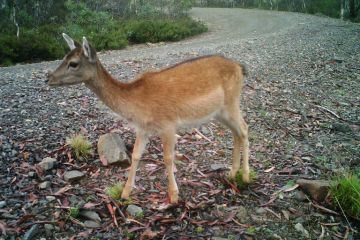
Action needed to stop a feral future for Tasmania
Invasive Species Council has called on all parties and candidates to make action on invasive species like feral deer, feral cats and weeds a priority.

Invasive Species Council has called on all parties and candidates to make action on invasive species like feral deer, feral cats and weeds a priority.
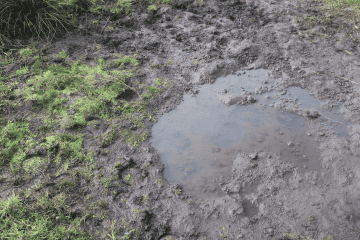
Federal Environment Minister Tanya Plibersek has flagged that the federal government may intervene to ensure a zero-tolerance approach to feral horses Kosciuszko National Park if the environmental impacts remain too high.
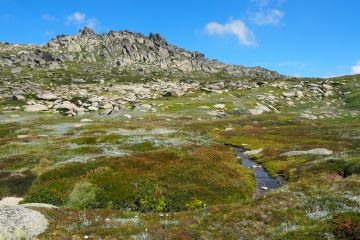
An independent review of the NSW Government’s trial of aerial shooting for feral horses in Kosciuszko National Park has found that the removal of 270 feral horses was conducted without any adverse animal welfare events and in line with standard operating procedures.

The Tasmanian government must conduct a study into the enormous economic costs of feral deer after a new study found deer hunting had tiny benefits.
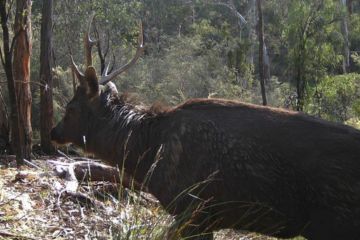
Ambitious South Australian feral deer eradication plan welcomed
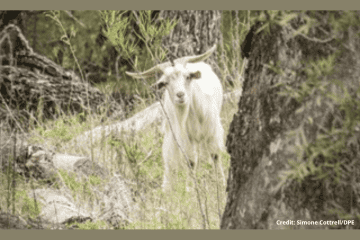
The Invasive Species Council has welcomed the release today by Environment Minister Plibersek of a new national plan to tackle feral goats.

Today our native wildlife and mountain streams have had a huge win
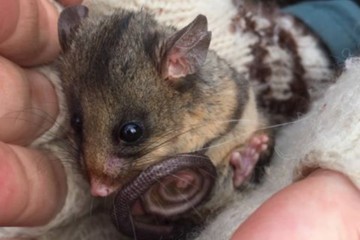
The important decision by the NSW Government to consider aerial control in Kosciuszko reflects that the public mood has shifted on this issue.

Australia needs an ongoing, sustainable source of funding to improve our biosecurity system so it can protect our environment.

We visited Kosciuszko National Park with Penny Sharpe, NSW’s new environment minister, where we face rising feral horse numbers.

The federal government’s own Threatened Species Scientific Committee have sounded the alarm bell on the impacts of feral horses on Australia’s threatened native wildlife.

Environmental and First Nations organisations have today written to UNESCO seeking intervention on the growing impacts of feral deer in and around the Tasmanian Wilderness World Heritage Area (TWWHA).

Ahead of the NSW election, the Invasive Species Council has sounded a warning that NSW faces a pest and weed disaster due to the cumulative effect of recent natural disasters, climate change, underfunding and a lack of political will.

Environment minister Plibersek has recognised the dismal failings of our national environmental laws. Her commitment to rewrite this law coupled with her commitment to zero new extinctions provides an exciting opportunity to establish a new era in nature conservation.

Biosecurity is an increasing feature in all our lives. The detection of varroa mites in 2022 saw the emergency destruction of tens of thousands of commercial and feral honey bee hives in NSW; a red fire ant outbreak in Queensland threatens our Aussie way of life forever; and foot-and-mouth disease looms on our border.

Invasive Species Council has called on all parties and candidates to make action on invasive species like feral deer, feral cats and weeds a priority.

Federal Environment Minister Tanya Plibersek has flagged that the federal government may intervene to ensure a zero-tolerance approach to feral horses Kosciuszko National Park if the environmental impacts remain too high.

An independent review of the NSW Government’s trial of aerial shooting for feral horses in Kosciuszko National Park has found that the removal of 270 feral horses was conducted without any adverse animal welfare events and in line with standard operating procedures.

The Tasmanian government must conduct a study into the enormous economic costs of feral deer after a new study found deer hunting had tiny benefits.

Ambitious South Australian feral deer eradication plan welcomed

The Invasive Species Council has welcomed the release today by Environment Minister Plibersek of a new national plan to tackle feral goats.

Today our native wildlife and mountain streams have had a huge win

The important decision by the NSW Government to consider aerial control in Kosciuszko reflects that the public mood has shifted on this issue.

Australia needs an ongoing, sustainable source of funding to improve our biosecurity system so it can protect our environment.

We visited Kosciuszko National Park with Penny Sharpe, NSW’s new environment minister, where we face rising feral horse numbers.

The federal government’s own Threatened Species Scientific Committee have sounded the alarm bell on the impacts of feral horses on Australia’s threatened native wildlife.

Environmental and First Nations organisations have today written to UNESCO seeking intervention on the growing impacts of feral deer in and around the Tasmanian Wilderness World Heritage Area (TWWHA).

Ahead of the NSW election, the Invasive Species Council has sounded a warning that NSW faces a pest and weed disaster due to the cumulative effect of recent natural disasters, climate change, underfunding and a lack of political will.

Environment minister Plibersek has recognised the dismal failings of our national environmental laws. Her commitment to rewrite this law coupled with her commitment to zero new extinctions provides an exciting opportunity to establish a new era in nature conservation.

Biosecurity is an increasing feature in all our lives. The detection of varroa mites in 2022 saw the emergency destruction of tens of thousands of commercial and feral honey bee hives in NSW; a red fire ant outbreak in Queensland threatens our Aussie way of life forever; and foot-and-mouth disease looms on our border.

Invasive Species Council has called on all parties and candidates to make action on invasive species like feral deer, feral cats and weeds a priority.

Federal Environment Minister Tanya Plibersek has flagged that the federal government may intervene to ensure a zero-tolerance approach to feral horses Kosciuszko National Park if the environmental impacts remain too high.

An independent review of the NSW Government’s trial of aerial shooting for feral horses in Kosciuszko National Park has found that the removal of 270 feral horses was conducted without any adverse animal welfare events and in line with standard operating procedures.

The Tasmanian government must conduct a study into the enormous economic costs of feral deer after a new study found deer hunting had tiny benefits.

Ambitious South Australian feral deer eradication plan welcomed

The Invasive Species Council has welcomed the release today by Environment Minister Plibersek of a new national plan to tackle feral goats.

Today our native wildlife and mountain streams have had a huge win

The important decision by the NSW Government to consider aerial control in Kosciuszko reflects that the public mood has shifted on this issue.

Australia needs an ongoing, sustainable source of funding to improve our biosecurity system so it can protect our environment.

We visited Kosciuszko National Park with Penny Sharpe, NSW’s new environment minister, where we face rising feral horse numbers.

The federal government’s own Threatened Species Scientific Committee have sounded the alarm bell on the impacts of feral horses on Australia’s threatened native wildlife.

Environmental and First Nations organisations have today written to UNESCO seeking intervention on the growing impacts of feral deer in and around the Tasmanian Wilderness World Heritage Area (TWWHA).

Ahead of the NSW election, the Invasive Species Council has sounded a warning that NSW faces a pest and weed disaster due to the cumulative effect of recent natural disasters, climate change, underfunding and a lack of political will.

Environment minister Plibersek has recognised the dismal failings of our national environmental laws. Her commitment to rewrite this law coupled with her commitment to zero new extinctions provides an exciting opportunity to establish a new era in nature conservation.

Biosecurity is an increasing feature in all our lives. The detection of varroa mites in 2022 saw the emergency destruction of tens of thousands of commercial and feral honey bee hives in NSW; a red fire ant outbreak in Queensland threatens our Aussie way of life forever; and foot-and-mouth disease looms on our border.
Get our blog the Feral Herald delivered to your inbox.
Our protected areas are being trashed, trampled, choked and polluted by an onslaught of invaders. Invasive species are already the overwhelming driver of our animal extinction rate, and are expected to cause 75 of the next 100 extinctions.
But you can help to turn this around and create a wildlife revival in Australia.
From numbats to night parrots, a tax-deductible donation today can help defend our wildlife against the threat of invasive weeds, predators, and diseases.
As the only national advocacy environment group dedicated to stopping this mega threat, your gift will make a big difference.
A silent crisis is unfolding across Australia. Every year, billions of native animals are hunted and killed by cats and foxes. Fire ants continue to spread and threaten human health. And the deadly strain of bird flu looms on the horizon. Your donation today will be used to put the invasive species threat in the media, make invasive species a government priority, ensure governments take rapid action to protect nature and our remarkable native wildlife from invasives-led extinction, death and destruction.
If you are having trouble submitting a form, please read this guide.
Please fill out the following form and one of our team will be in contact to assist as soon as possible. Please make sure to include any helpful information, such as the device you were using (computer, tablet or mobile phone) and if known, your browser (Mozilla Firefox, Chrome, Safari etc)
"*" indicates required fields
Dear Project Team,
[YOUR PERSONALISED MESSAGE WILL APPEAR HERE.]
I support the amendment to the Kosciuszko National Park Wild Horse Heritage Management Plan to allow our incredible National Parks staff to use aerial shooting as one method to rapidly reduce feral horse numbers. I want to see feral horse numbers urgently reduced in order to save the national park and our native wildlife that live there.
The current approach is not solving the problem. Feral horse numbers have rapidly increased in Kosciuszko National Park to around 18,000, a 30% jump in just the past 2 years. With the population so high, thousands of feral horses need to be removed annually to reduce numbers and stop our National Park becoming a horse paddock. Aerial shooting, undertaken humanely and safely by professionals using standard protocols, is the only way this can happen.
The government’s own management plan for feral horses states that ‘if undertaken in accordance with best practice, aerial shooting can have the lowest negative animal welfare impacts of all lethal control methods’.
This humane and effective practice is already used across Australia to manage hundreds of thousands of feral animals like horses, deer, pigs, and goats.
Trapping and rehoming of feral horses has been used in Kosciuszko National Park for well over a decade but has consistently failed to reduce the population, has delayed meaningful action and is expensive. There are too many feral horses in the Alps and not enough demand for rehoming for it to be relied upon for the reduction of the population.
Fertility control as a management tool is only effective for a small, geographically isolated, and accessible population of feral horses where the management outcome sought is to maintain the population at its current size. It is not a viable option to reduce the large and growing feral horse population in the vast and rugged terrain of Kosciuszko National Park.
Feral horses are trashing and trampling our sensitive alpine ecosystems and streams, causing the decline and extinction of native animals. The federal government’s Threatened Species Scientific Committee has stated that feral horses ‘may be the crucial factor that causes final extinction’ for 12 alpine species.
I recognise the sad reality that urgent and humane measures are necessary to urgently remove the horses or they will destroy the Snowies and the native wildlife that call the mountains home. I support a healthy national park where native species like the Corroboree Frog and Mountain Pygmy Possum can thrive.
Dear Project Team,
[YOUR PERSONALISED MESSAGE WILL APPEAR HERE.]
I support the amendment to the Kosciuszko National Park Wild Horse Heritage Management Plan to allow our incredible National Parks staff to use aerial shooting as one method to rapidly reduce feral horse numbers. I want to see feral horse numbers urgently reduced in order to save the national park and our native wildlife that live there.
The current approach is not solving the problem. Feral horse numbers have rapidly increased in Kosciuszko National Park to around 18,000, a 30% jump in just the past 2 years. With the population so high, thousands of feral horses need to be removed annually to reduce numbers and stop our National Park becoming a horse paddock. Aerial shooting, undertaken humanely and safely by professionals using standard protocols, is the only way this can happen.
The government’s own management plan for feral horses states that ‘if undertaken in accordance with best practice, aerial shooting can have the lowest negative animal welfare impacts of all lethal control methods’.
This humane and effective practice is already used across Australia to manage hundreds of thousands of feral animals like horses, deer, pigs, and goats.
Trapping and rehoming of feral horses has been used in Kosciuszko National Park for well over a decade but has consistently failed to reduce the population, has delayed meaningful action and is expensive. There are too many feral horses in the Alps and not enough demand for rehoming for it to be relied upon for the reduction of the population.
Fertility control as a management tool is only effective for a small, geographically isolated, and accessible population of feral horses where the management outcome sought is to maintain the population at its current size. It is not a viable option to reduce the large and growing feral horse population in the vast and rugged terrain of Kosciuszko National Park.
Feral horses are trashing and trampling our sensitive alpine ecosystems and streams, causing the decline and extinction of native animals. The federal government’s Threatened Species Scientific Committee has stated that feral horses ‘may be the crucial factor that causes final extinction’ for 12 alpine species.
I recognise the sad reality that urgent and humane measures are necessary to urgently remove the horses or they will destroy the Snowies and the native wildlife that call the mountains home. I support a healthy national park where native species like the Corroboree Frog and Mountain Pygmy Possum can thrive.